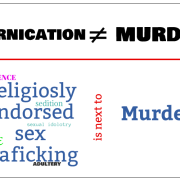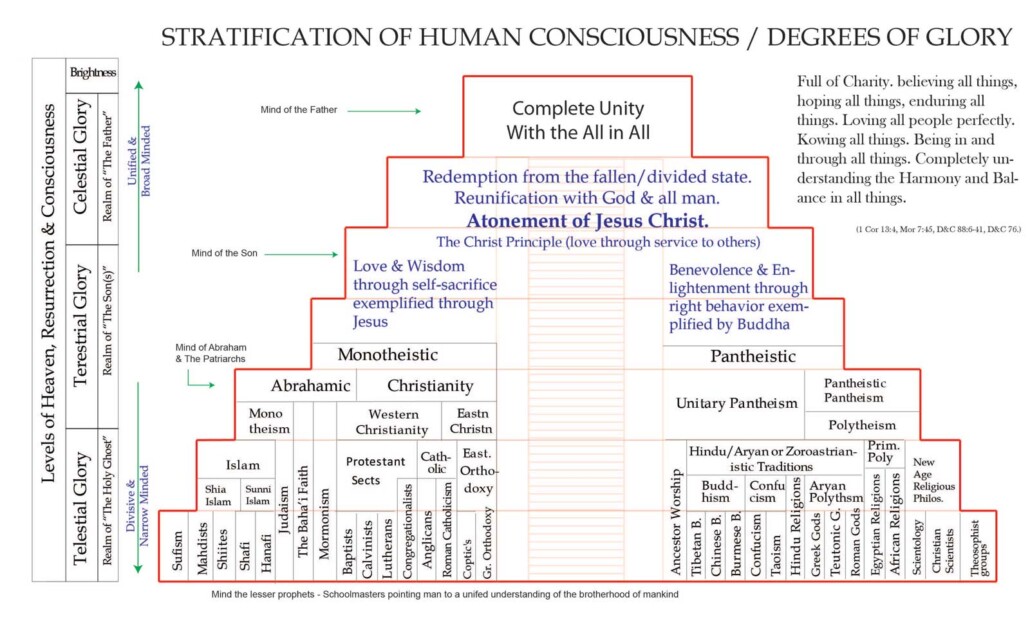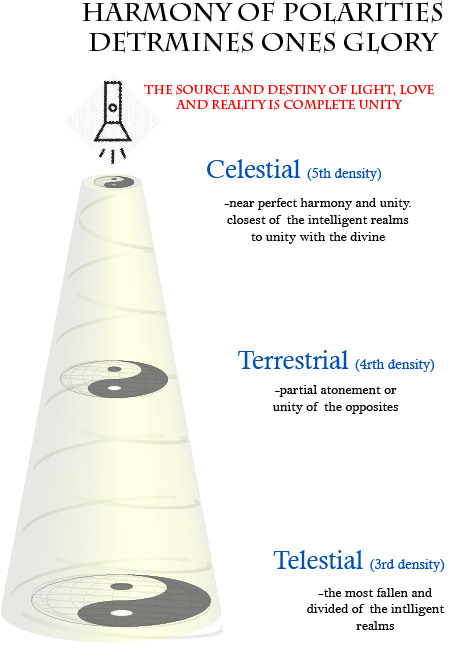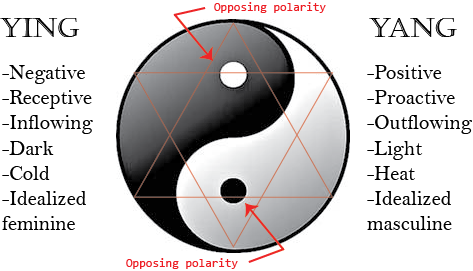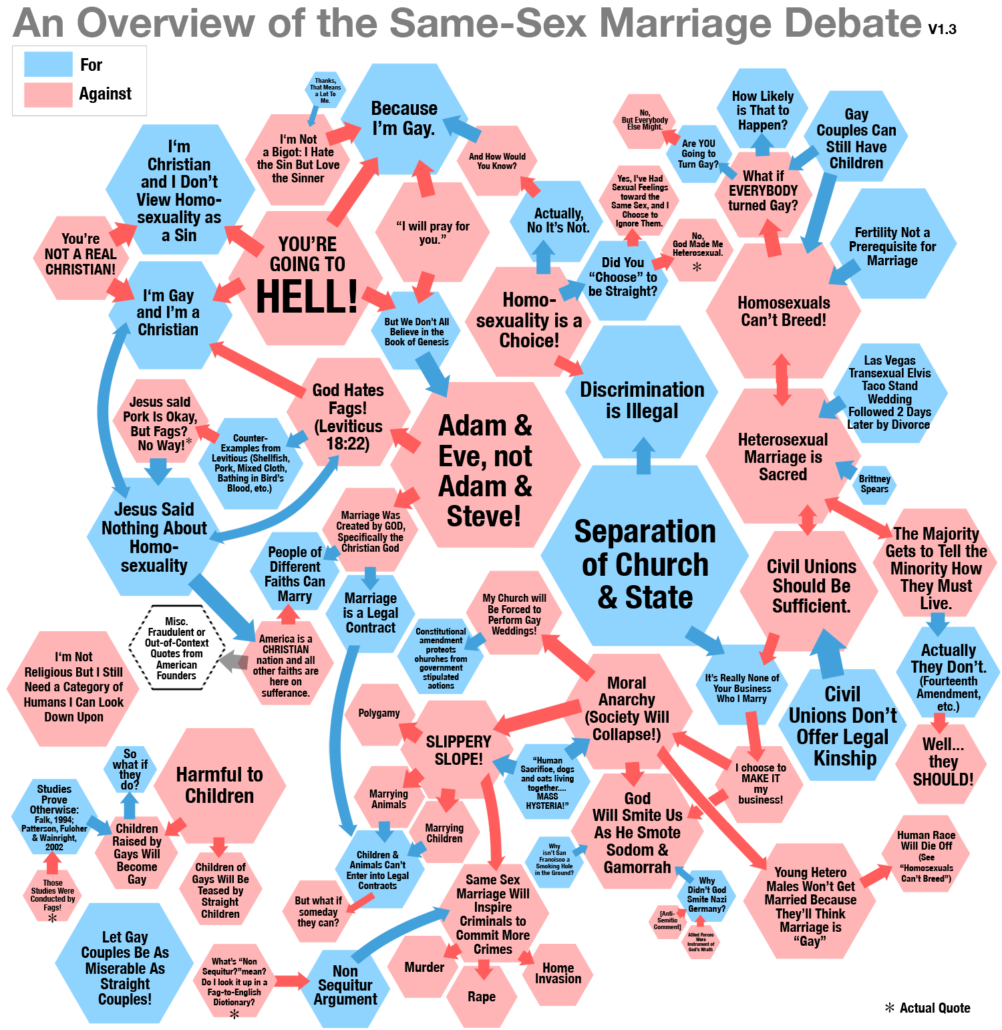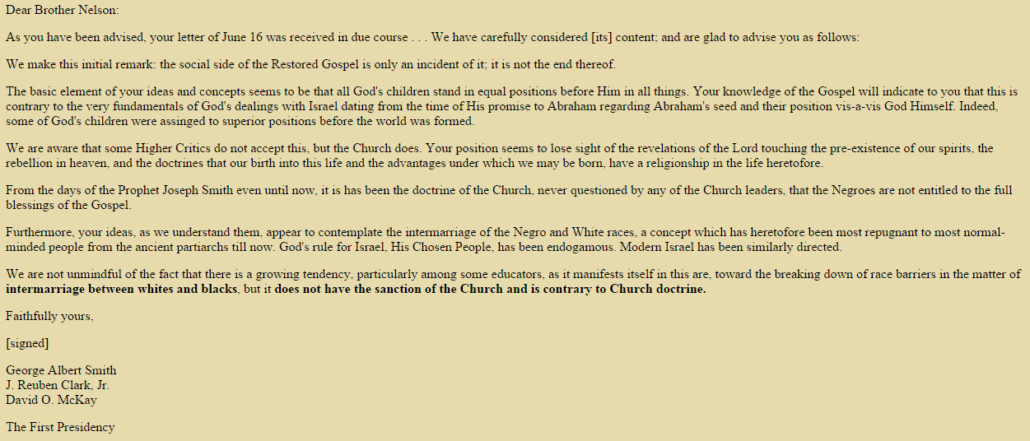
Did you know: Temple recommend questions were first instituted by Brigham Young a decade after the Saints came to the Salt Lake Valley (1857) and have evolved significantly over time. Early interviews included questions about branding an animal that you did not own and using another person’s irrigation water. Since then, the temple recommend questions have changed significantly.
My Thoughts on the LDS Temple Recommend Interview
After 20 years of temple service, I’ve lately found myself a bit disillusioned by the temple recommend interview process. I know most Mormon’s think anyone with issues about the temple must be “unworthy” to enter— but for me, my issues come from learning more details about our problematic history and doctrinal inconsistencies which are encapsulated in the interview questions. As well as my really coming to read and understand masonic teachings and ceremonies which some of the endowment comes from— as well as how they relate to the portions of the endowment that have been removed. Don’t get me wrong, I’ve found a lot of value in the temple rituals. But I really think it’s’ time for the temple interview questions to be updated (and perhaps take another look at the entire interview system). It seems for many the questions can deter temple participation when they come across as a test around whether one has more allegiance to the church than to God or one’s own morality or spiritual conscience.
I believe many of the questions need to be rewritten, and the “interview” process needs to revised and split up between leaders and parents, so it can be more meaningful and less of a drain on leaders time. The process should be a discussion, not an interview. The temple itself should restore the school of the prophets and solemn assemblies (for all worthy members), and focus more on teaching and consoling, instead of solely promoting a system which suggests every human who has ever lived is being blocked outside the heavenly kingdom of God until we modern Mormons somehow find their names and do their temple work. (see Clearing up Misunderstandings in the LDS View of the Afterlife). I’m really not sure what would be best, I just know the current system can be a bit distasteful. On that note, I have decided to write these more thoughtful and honest answers to the questions to clarify what I believe and what I think worthiness means— as well as the doctrinal issues with many of the questions. Issues that could be avoided by rephrasing the questions.
The Q&A’s
1. Do you have faith in and a testimony of God the Eternal Father, His Son Jesus Christ, and the Holy Ghost?
My short answer. What do you mean by a testimony of? Yes I believe in God. And yes I believe Father, Son and Divine Spirit are three aspects and archetypes of that God—but realize my views of these are likely far different than yours. And I hope that’s OK. Wouldn’t a better question be to simply ask “Could you concisely share with me some of your feelings and belief’s about God?”
My long answer. After spending years really studying the nature of god, my concept of God, Jesus & the Holy Ghost are so different from what they were when I was a 19 year old missionary (simply reciting to others the doctrine I was told)—that looking back I might as well have belonged to another religion and have been worshiping “a different God.” After spending 20 years seriously studying the scriptures, theology and getting my own answers from heaven, I now see how these terms are highly symbolic and archetypal and that by including in our first question the unique Article of Faith wording “God the Eternal Father, His Son Jesus Christ and the Holy Ghost”, we are essentially testing members on a creed of dogma concerning the nature of God, as a way to pridefully separate ourselves from other Christian Faiths. Like all creeds and dogma tests this question puts undo stress on the idea that a “testimony” in the precise nature of god is required for entrance into heaven or obtaining sealing blessings (which I absolutely do not believe is true.).
The unique wording of this question seems to be testing belief in our view of God as a “social trinity” (or three distinct beings one in purpose but separate in body) as opposed to Judaic, Catholic or Protestant views with differing ideas concerning unity of substance and essence, etc. It seems like the type prideful and divisive question that the early Catholic Arians often forced upon the Monophysites before excommunicating and ostracizing them.
My question is why? What if I come from a protestant background, believing that Jesus Christ IS the the Eternal Father? (ie. one in essence, but separate in person from the Father). Does that make me ‘unworthy’ when our scriptures teach the same? Look at Alma 11:38–39, Mosiah 15:1–4, Ether 3:14–15, Mosiah 16:15. ALL of these Book of Mormon scriptures teach specifically THAT CHRIST IS THE VERY ETERNAL FATHER. Until Christ’s coming there is no distinction between the essence of Christ and the Father. No hint that they have separate physical “bodies”, and far more biblical scriptures suggesting the Father is Spirit than corporeal. Only later does that distinction appear, (see John 10:30, 17:11-23, D&C 20:28; 121:28). Look at the wording of Mosiah 15:2–3 and Ether 3:14, where Christ is said to be both the Father and the Son—called Son when manifesting singly in form to flesh, but Eternal Father when in unity with Heavely Spirit. These scriptural ambiguities have been debated by prophets and philosophers for thousands of years! The Catholic Catechisms on the trinity are carefully worded to preserve the scriptural ambiguities, paradoxes and complexities, and yet we come along and pretend we have the simple clear-cut answers when there are no simple answers because of the sophistication of the metaphors and archetypes. Joseph’s Smith’s first vision is not even an answer because come to find out his earliest accounts have only ONE physical being (much like the Book of Mormon and New Testament theology). Not until later, when Joseph’s theology starts changing does he place “two physical beings” in his vision. Careful research shows our theology to be historically inconsistent, contradictory and juvenile. And scripture appears to purposefully present paradoxes in this regard, which is why the early church fathers agreed on calling God largely “incomprehensible.” (See the Wikipedia articles on sabellianism/modalism, trinitarianism, or the Nestorian debates to get a grasp on how trite most of our Mormon understandings of the historical christian concepts of trinity actually are.)
This question only reinforces the false pride within the church that our “social trinintarian” views are uniquely different and superior to those of Greater Christianity at large. When you put this kind of stress on our neo-Trinitarian assertions — how will they not confuse and disillusion our members when they are confronted with the fact that Joseph’s view on the nature of the godhead clearly changed over time? That his accounts of how many beings he saw in his “first vision” seem to have changed to match his views? (see church produced gospel topic essay “First Vision Accounts” — or better see Dan Vogel’s videos). That the Book of Mormon essentially contains classic Trinitarian views on God (Alma 11:38–39, Mos 15:1-4, Ether 3:14–15, Mosiah 16:15), and that Church leaders have changed some of these verses to better align with current views? (for instance, 1 Ne 11:18,21, 32 & 1 Ne 13:14) That the bible contains verses which conflict with current views (1 Tim. 1:17 | 1 Tim. 6:16 | Jer. 23:23–24 | 1 Kings 8:27, Acts 17:24–28, John 4:24). That Joseph Smith’s lectures of Faith define the Father as “a personage of Spirit”, the son as a “personage of tabernacle [flesh]”, and the Spirit being “the mind” of the Father and Son (LOF 5:2). And that later, these views were changed to make “the Father have a body”, and the Holy Ghost to be “a personage of Spirit” (130:22). That views of God held by Old Testament prophets very plainly appear to be vastly different than our current view. (Elohim is a plural form of the Word ‘God’… and definitely not the “name” of the Father). That Joseph Smith’s King Follet Discourse and D&C 121:32/132 adds complexities to these social Trinitarian views which create more questions than it answers concerning the nature of God(s). That D&C 88:6–13, 93:7-35 teach of an omnipresent non-anthropomorphic aspect of God more in line with Tim. 1:17, 1 Tim. 6:16 and many early church fathers, and more in line with my current beliefs. (Beliefs that understanding the exact nature of God is impossible and blasphemous. That we only understand the part of God that is revealed to us, and that God reveals himself/itself differently to different people and that we should respect that and seek to ‘know’ god in our own unique way, instead of forming dogmatic or creedal opinions of him/her/it).
I really wouldn’t have an issue with this question, except that the pride within the predominate view we’ve pushed for the last hundred years is causing so many to falter, lose their testimonies or leave our faith. People lose faith when the church places so much emphasis on the supposed dogmatic “truth” of our ideas on God — and then they find out those ideas are not even entirely consistent. And worse, our pride will cause many of our members to reject the coming Jewish prophets. I suggest we stop testing members on their view of God as a requirement for entering the temple and start asking members about their beliefs and experiences with God, so that we may find ways to add to and grow their beliefs in meaningful ways. I suggest we start stressing our scriptural similarities with the Christian trinity, (and even Jewish/Muslim unitarianism) not just our imagined differences. I believe learning the nature of God as He is symbolically taught in our scriptures is very important and deeply personal. I think the conflicting and even paradoxical descriptions of God in LDS and Christian scripture are purposefully designed to try and discourage dogmatic creeds or idol interpretations of deity. Let’s find and define God together as a church and enjoy each other during the journey, not arrogantly dictate our narrow interpretation of God as seen by one of his many, many witnesses.
2. Do you have a testimony of the Atonement of Christ and of His role as Savior and Redeemer?
Testimony of the atonement?… what is that even really supposed to mean?! Testimony is defined as “the evidence or proof provided by the existence or appearance of something.” Shouldn’t you be asking if we have faith (which is belief, even in the absence of definitive evidence) in Jesus’ ability to reconcile us to god? Similar to my last answer, I think it would be more constructive to talk about my relationship with Christ and what he means to me rather than testing me on whether I have a “testimony” of his roles and incomprehensible “atonement” (however you want to define that befuddled Mormon concept). I’d rather share my understanding of Christ and his life/death as a living archetype or symbol of universal love, overflowing mercy, forgiveness and harmony as well as the at-one-ness or unity of all creation—my interpretation of the scriptures to worship him, not so much as a singular person per se, (since only an egomaniac would want to be worshiped) but as a mediator/symbol of a unified heavenly group or ideal with which I try to align (see John 17, D&C 88:6–13,41; Acts 17:28, etc). I believe the “Atonement of Christ” motivates all of my desires to love and reconcile the differences of belief I see in this world. (Gather together in one, all things; D&C 27:13) Using yes or no concerning my ‘testimony of Jesus’ as a righteousness test, insults my understanding of what Jesus and his atonement came to offer. Isn’t that what the Pharisees, Jewish High Priests & Pilate were doing when they crucified him? Didn’t they give him their own cultural religious ‘righteousness test’ — measuring Him against their preconceived notions of what the prophesied Messiah should be and declared that he failed–barring him from the temple and synagogue? If one responds “I don’t really understand the atonement, and I don’t have any real evidence to base a testimony of his roles on”, are they unworthy of the temple?
One of the reasons why this upsets me a bit is because although I have had many spiritual and emotional experiences to base my “testimony” on (which are poor proofs or testimonies by the way)—I know a lot of LDS people who haven’t had any experiences worthy of being called “testimony.” They operate purely on faith and hope—and that should be ok! Because of the way these questions are structured, these individuals often express how “unworthy” or second class they feel. They feel pressured to lie about their ‘testimony’ just so they can get married or sealed to family. This upsets me given the fact that the Jewish leadership excommunicated Jesus and threw him (and his followers) out of the synagogue for non-conformity to predominate cultural beliefs. Joseph Smith, our own religious founder was also ostracized from his religious community for his differing “testimony” on Jesus. Testimony has nothing to do with righteousness and should play no part in obtaining temple blessings. The scriptures teach that faith is required for salvation… not testimony.
3. Do you have a testimony of the restoration of the gospel in these the latter days?
Might we instead ask “share with me your testimony or beliefs concerning the restoration of the gospel in these latter days.” Or “do you have faith in the restoration work the Church is trying to accomplish in these latter days?”
My detailed answer to the current wording of the question, would be what exactly do you mean by ‘testimony of the restoration of the gospel’. I don’t believe the “gospel” or good news of Christ, needed to be “restored” in the way we generally teach this concept. I don’t believe the cultural concept we teach concerning the “great apostasy” and “restoration” is found in scripture. (See my article on “Redefining the LDS (Protestant) View of the Great Apostasy.”) Such a belief calls for a far more weak and pathetic god than my conscience will allow me to believe in. (One which allowed His church to be destroyed for 2000 years without quickly picking new prophets to correct it). I believe the divine gave Joseph visions and revelations to reform the religious beliefs of Joseph’s culture and to restore certain truths and priesthoods. I believe Joseph was called to create the Church because God has a particular work for us to do in America. (or perhaps more properly Joseph pulled or channeled information from the divine in order to accomplish a work that needed to be done by someone, and he with many other’s heeded the call existing in the New England group mind.) I believe the Catholic/Eastern Orthodox Church has been led for the last 2000 years by God every bit as much as the wicked nation of Israel was for the 1600 years prior to Christ. I believe LDS scripture clearly supports my views. (See Redefining the LDS (Protestant) View of the Great Apostasy) I also believe that we as Mormons have fallen into many of the same errors that Joseph sought to correct, and I try to address a number of these in these answers. I believe the Church is in dire need of continual restoration and reformation. I don’t care to dwell on the negatives. I love the church and think it’s doing a lot of good and generally fulfilling its divine roles. I believe God leads all religions and we will prosper according to how well we as a church follow His Spirit which tells us what he would have us do in the world.
4. Do you sustain the President of the Church of Jesus Christ of Latter-day Saints as the Prophet, Seer, and Revelator and as the only person on the earth who possesses and is authorized to exercise all priesthood keys? Do you sustain members of the First Presidency and the Quorum of the Twelve Apostles as prophets, seers, and revelators? Do you sustain the other General Authorities and local authorities of the Church?
Perhaps a better question would be “Do you uphold the President of the Church of Jesus Christ of Latter-day Saints as the highest mortal church authority and only person on the earth who possesses and is authorized to exercise all priesthood keys which we believe the church to posses?“
I’m a bit baffled as to why the question would single out the first presidency and Quorum of the Twelve as the church’s only prophets, seers and revelators, since that goes against our scriptures. If the question is trying to validate the language in D&C 107:91–92 then use it’s precise language instead of this convolution of it. Simply put, this question comes across as a test of authoritarian allegiance bordering on a Spanish Inquisition apostasy hunt.
Like most rational individuals I believe in sustaining religious and political leaders. I try my best to do so. I “sustain” our current President of the High Priesthood (Prophet) as a prophet, a seer and a revelator; as well as the first presidency, travelling twelve and standing twelves of the stakes as prophets, seers and revelators inasmuch as they exercise those gifts of the spirit. I sustain my Bishop, my Sunday school teacher and my home teacher exactly the same; as prophets (or prophetesses), seers and revelators inasmuch as they exercise those spiritual gifts. As you can see, I likely define those titles differently than you, and have issue with how they’re passed around in the church, like they’re suits to be worn instead of gifts and skills that must be worked at, honed and consciously sought for. I hope that the Quorum of the Twelve are more often than not at least moderately clairvoyant and connected to the Spirit of Christ—and not just with the spirit of Brigham Young, or their own egos, but I just don’t know them well enough to judge in every case. I don’t believe our Church leaders talk to Jesus any more than the rest of us. Church history has many examples of when their prophesies or revelations ended up being just their egos. Like with all men I sometimes see a good amount of ego & error in their discourse—but why dwell on the negative? I also see overwhelming good. I could say the same about my own ego & error. I believe they lead the Church according to their agency. I certainly don’t believe in the Mormon doctrine of muted prophetic infallibility. (That God will never allow the “brethren” to lead the church “astray”–whatever that is supposed to mean.)
I believe in a God/gods who rule all men, nations and organizations according to their agency. I see what I consider as a lot of idolatry in the Church by those “sustaining” the Church leaders and putting them (or them putting themselves) in thrones that should belong exclusively to higher beings who have proven themselves worthy of that role. I also see a good many things the church leadership needs to repent of. I do not believe they are beyond reproach, but I have beams in my own eye which are more important. I believe the President of the High Priesthood is the only one authorized to exercise all the Mormon priesthood keys. LDS scripture makes it pretty clear that there are more than one line of priesthood on earth and that the cultural Mormon view that Mormons are the only ones on earth with valid “priesthood” is distorted, egocentric and contrary to our own scriptural theology. I see no scriptural, logical, or personally spiritual basis to suggest that there are not priesthood keys on earth that he/they do not possess, nor are authorized to exercise. In fact many scriptures seem to suggest that claiming to be God’s only people and priesthood is dangerously close to a core tenet of the Church of the Devil. (see this article for instance) (From a Mormon perspective we could talk about keys the LDS church hasn’t gotten yet, the eternal nature of the priesthood, the distorted & inconsistent Mormon view of apostasy, as well as keys held by supposedly “translated” beings like John the Beloved, and the three Nephites and the groups these individuals have/are assisting in probable non-Mormon restoration work among Judah and the other scattered tribes mentioned in LDS scripture. D&C 49:8 says as much. see also D&C 86:8–11; D&C 84:17–18, Abr 1:4, 2:11; D&C 77:14–15, D&C 133:12–13,24–35 for instance.)
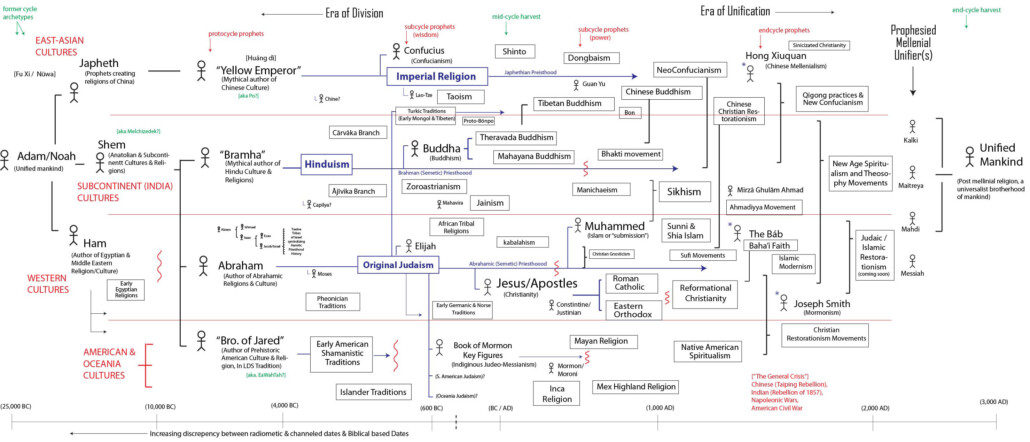
As mentioned in the article ‘The Priesthood of God & Its Relationship to the Only True Church Doctrine’. Eternal priesthood has been given to every major division of the earth. The whole purpose of Paul’s discourse on Christ’s “Priesthood of Melchizedek” was to help the prideful Jews see that there was Priesthood in the world greater, older and above Abraham and Moses. (Since Abraham was only one of many that Melchizedek gave priesthood to). Contrary to our own scripture, LDS ideas on Priesthood have become just as befuddled and prideful as that of the ancient Jews.
5. Do you live the law of chastity?
As defined in the temple—sex only between a man and woman who are legally and lawfully wedded—Yes. I have never had sex with anyone but my wife. Nor am I, nor have I been, sexually unfaithful to her.
But the law of chastity as defined by myself or Jesus in the Sermon on the Mount — no. It is a law that was made purposefully so lofty and idealistic as to be nearly impossible to keep (an absolute lack of lust, which I define as selfishness in sexual desire). Christ’s whole point in saying “whosoever looketh on a woman to lust after her hath committed adultery with her already in his heart” was to show the pharasaically minded Jews that they were all guilty of sin. Just as saying “whosoever is angry with his brother” is under the same judgement as those who kill. As in “you’re all murderers in sense, so don’t put too much emphasis on the letter of the law—look to the Spirit of the law and treating others as you would be treated instead. Realize you always fall short of the law and try and be better!” Like the Mosaic Law, the LDS strictures on chastity are useful and generally good for youth and society. But I think Christ’s Sermon on the Mount was trying to counter this type of pharisaical rigidity in moral law.
The strict rigidity we have assigned to our modern “law of chastity” combined with the misapplied concepts of essential perfection which we apply to our “prophet seers and revelators” (I use those term sarcastically here), forms the basis of my issue with this question which I think is one of the largest reasons why good young people leave Mormonism with bitter feelings. This is especially sad because it’s so hypocritical given our history. Our pharisaic definition of “chastity” combined with our pharisaic view of our leadership dictates that Joseph Smith must have lived our modern concept of the law of chastity. And that all of his words and actions were that of a “prophet, seer and revelator.” And that God would not have let him “lead the church astray” in any way. (All false conclusions when you look at Biblical examples of prophets and High Priests).
So naturally its devistating to the faith of members when they learn that Joseph Smith did not keep the Law of Chastity as defined by modern Mormonism or even that of his own revelations. There is evidence accepted by Church employed historians that he had sexual relations outside of his marriage to Emma, long before the doctrine of Plural Marriage was “revealed” to the church—and certainly before he was “legally and lawfully wedded” to them (see this article). The church essay’s attempt to spin his sexual affair with 16 year old house guest, Fanny Alger as a “first plural wife” is absolutely ridiculous. (Like God sent an angel with a drawn sword to command Joseph to go behind his wife’s back and have sex with a 16 year-old house guest who is staying with them to help Emma recover from physical troubles! And then denounce polygamy until 5 years later when he finally gives into it and starts marrying women left and right.) There is indisputable evidence that he lied about practicing plural marriage long before it was revealed to the church. I am appalled at the quotes suggesting that he only reluctantly introduced the doctrine of plural marriage after an angel with “a drawn sword” threatened to kill him if he didn’t. (That’s not how a Christ-like god works!) I am skeptical of the authenticity of D&C 132’s numerous threats to “destroy” Emma or any other woman who rejects plural marriage. I agree with Emma, the three witnesses and Joseph’s children, that he was deceived concerning polygamy. It was simply used as an excuse for adultery and dynastic power plays. I believe D&C 132 is a corrupted revelation and I believe all revelations have the ability to be corrupted by negative influences (see D&C 50:1–3, 1 John 4:1). Despite all this, I see divinity in Joseph’s pre-polygamy visions, the Book of Mormon, his revelations and in current Church strictures on sexual morality.
Although I reject the context, I can sympathize with Joseph’s assertion of moral relativism given in his proposal to Nancy Rigdon (the unmarried 19 year old daughter of Sidney Rigdon). He said,
“That which is wrong under one circumstance, may be, and often is, right under another.
God said, “Thou shalt not kill;” at another time He said “Thou shalt utterly destroy.” This is the principle on which the government of heaven is conducted—by revelation adapted to the circumstances in which the children of the kingdom are placed…”
The rest of this quote, which I have cut short for reasons of brevity, is quite informative given the context of both modern Mormon sexual strictures and the similar rigid religious mores of Joseph’s day.
I do live the current “Mormon” Law of Chastity, even though it is harmful and hypocritical for the church to uphold this strict law in the sacrosanct manner it is done, when its founders taught & practiced contrary to it. Human sexuality is incredibly delicate and complicated. We should follow the scriptures in strictly forbidding adultery and condemning it as one of the most heinous sins. But we should be very careful in demonizing the sexual mistakes of the youth. Outside of adultery, I prefer that both myself and my children’s sexual activities be governed by personal revelation and common sense. For this reason I will ask each bishop not to inquire after my children’s sexual activities or pose questions concerning “chastity” to them until they are adults. I believe that responsibility is best left to parents (the patriarchal order of the priesthood). The LDS “law of chastity” left me so afraid of sex growing up (in the way that it generally demonizes sex to youth), that I had a hard time properly enjoying sex soon after marriage. I don’t want that my children to experience that outcome.
I believe complete unselfishness in regards to our sexual desire is the high standard which Christ gives in the sermon on the Mount, and is a standard none, including myself have reached, but one we can all work toward–one which I seek to work toward.
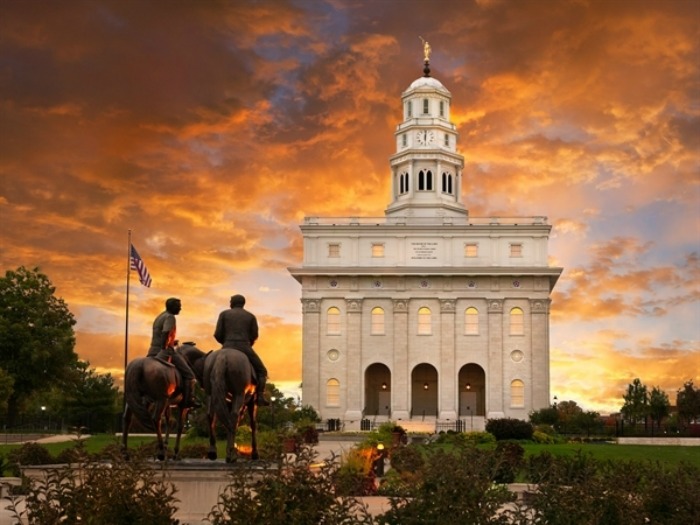
6. Is there anything in your conduct relating to members of your family that is not in harmony with the teachings of the Church?
This is kind of a ridiculous question. How about rephrase it with “Is there anything in your conduct relating to members of your family which you would like to discuss and feel is not in harmony with the teaching so the Church? Since Mormon scripture and doctrine often teach “perfection” (3 ne 12:48), everyone should technically say no to this question. This is even more true if you are a parent. Kids try my patience as much as anything I can imagine. I am far from perfect in my discipline and teaching, but I do my best–which I think & hope is pretty good parenting. I don’t think anyone would consider me even remotely “abusive” if that’s what you are asking here. (If that’s what you’re asking, why not just come out and ask it?) Really, if you want to test my righteousness, instead try asking for my thoughts on how I’m doing or better yet why don’t you ask my family what kind of man they think I am? I would personally be far more interested in their opinion of me than my opinion of myself. I think I’m a fairly easy husband and father to get along with.
7. Do you support, affiliate with, or agree with any group or individual whose teachings or practices are contrary to or oppose those accepted by the Church of Jesus Christ of Latter-day Saints?
This question really needs to be rewritten. You as a leader have got to admit this question is so manipulatively ridiculous that it’s hard to hold a straight face when discussing it. At least half the world is part of a group “whose teachings or practices are contrary to or oppose those accepted by the LDS Church.” Was this question written by Kim Jong-un, Mao, Stalin or the Catholic Church during the Inquisition? If any temple recommend question was to make people lose faith in Mormonism… this would be it. It comes across as a cult practice or witch hunt. I’ll try to answer honestly without laughing. Support? Not monetarily (well I guess that’s not true since I pay taxes to the U.S government & various non-LDS companies which have “practices contrary to the church”). In fact the church itself has teachings and practices that are contrary or opposed to its own scriptural teachings. Affiliate with? I have family members, friends and online acquaintances who are contrary to the church, so yes. Also I read their material and comment on their forums. Agree with? For sure— They have a lot of good points. Remember that advice “agree with thine adversary quickly while thou art in the way with them”—I think it was um… Jesus who said that. I increasingly find myself following this advice in connection with anti-Mormons because I’ve found that frankly they’re often right. In my experience the majority of “anti-Mormons” are ex-Mormons who left because they felt marginalized, shamed or demonized, and because of their experiences; they have really good points concerning things the Church should improve on. Most of them (including early leaders like Martin Harris, Emma Smith, Smith’s children & Oliver Cowdery) left because church leaders did not follow the Lord’s advice in D&C 121:41–43. In other cases they have differences of opinion on doctrinal issues—and again have really good points which I very often agree with. In other cases they found fairly overwhelming evidence of wrongdoing in church history and feel that official LDS treatment of these dark aspects of our past are unfair. Again I agree with them. In my life I try to reconcile all the differences of opinion that I run up against, and I am most successful in this when I love and agree with my “supposed” enemies. I seek first to understand and agree with them—then I see if I can get the same respect in return. I do not like to be negative or contrary, but this is a polarizing question which almost requires it.
I am also a fanatical truth seeker, which means I read and consider the truthfulness of any revelation proposing to be from heaven. I’d be quite the hypocrite if I accepted Joseph Smith’s prophetic ability despite his obvious mistakes and misunderstandings (like the kinder-hook plates or the true nature of the Book of Abraham papyrus), and yet didn’t also read and glean the truth out of other purported revelations like the Koran, the Tao Te Ching, The Avesta, The Vedas, The Apocrypha, Baha’i Scripture, The Zohar, Oahspe, The Urantia Bible, The Kolbrin, The Book of Ben Kathryn, The Sealed Portion, The Aklatan, The Metinah Papers, etc. One of my largest issues with Mormonism is that very hypocrisy, with the majority and leaders and members believing they have “arrived at truth” and have no more need to search out the continuing revelations of heaven. “A bible? A bible? We Mormons already have a Quad and we need no more scriptures!” (unless they come from our leaders, and are given in our culturally accepted language, and in no way contradict our cultural interpretations of our current understanding of the Christian gospel).
Opposing views I sympathize with: Some aspects of Joseph’s & the early saint’s polygamy, blacks & the priesthood, women and the priesthood, the way sexuality is taught in the church, the way homosexuality was dealt with in the church, Utah polygamy, elitism, phariseeism, autocracy in church hierarchy, “worthiness” interviews, church history cover ups, the Danites, blood atonement, etc, etc… For most my life I thought all these issues were completely baseless (because that’s what I felt Church leaders led me to believe), but the more I learn the more I see we have a shady past that needs to be brought out into the open, discussed, reconciled and forgiven. But as I said before, I try not to ever focus on the bad when there is so much good to focus on. I don’t believe it is constructive to discuss these issues in church settings. I chose to focus on faith and repentance through the love of Christ. I am a reformer and will continue (following Jesus’ example) to press for reform according to what God puts in my heart.
8. Do you strive to keep the covenants you have made, to attend your sacrament and other meetings, and to keep your life in harmony with the laws and commandments of the gospel?
Yes I do my best to keep the covenants I have made personally with God. I seek diligently to keep my life in harmony with the gospel laws God gives me personally. I typically attend church but would not think twice about spending quality time with family and friends above, and in lieu of, church attendance. Church attendance once held a special place in my heart and in my spirituality, but since having kids, and as I increasingly personally connect with God and receive intelligible guidance through his Spirit I get less and less from Church lessons. I like to go to church to try and help others and connect with others. I see it as a great teaching tool for children and youth. I believe strongly in the idea of people getting together to try and solve social problems and teach youth. But my spirituality is increasingly shifting from buildings and organizations built with human hands to those built without human hands (as in Acts 7, 2 Cor 5, etc). I believe the principles of shifting away from organizational religion and people “preaching to us” to a system where we reach through the veils and receive personal revelation and personal covenants with divine beings is at the heart of the endowment teachings. I believe the rigid and dogmatic aspects of organized religion are “schoolmasters” which seek to bring young and old souls together to a higher state of mind. I believe the gospel is more about good works than ordinances or teaching and preaching. In that light, parts of this question seems a bit silly as a righteousness test.
9. Are you honest in your dealings with your fellowmen?
I believe so. I sure try to be. This is a great question by the way. A better phrasing would be “Do you do your best to be honest in your dealings…”, and “is there anything you would like to talk about concerning your honesty…”.
10. Are you a full-tithe payer?
As I define it Yes. Which the Church Handbook of Instruction suggests I’m allowed to do concerning this question.
But I’d like to clarify myself. Because the church doesn’t obey or even teach the original spirit of tithing and consecration, which was social economic equality (exalting the poor and humbling the rich). And because the church doesn’t have any transparency concerning the details of where our tithing money is going, and gives members no input on its distribution— I pay tithing as it was originally defined, on my annual “interest” on my “surplus property” (see D&C 119:3–5).
3 And this shall be the beginning of the tithing of my people. 4 And after that, those who have thus been tithed shall pay one-tenth of all their interest annually; and this shall be a standing law unto them forever, for my holy priesthood, saith the Lord. 5 Verily I say unto you, it shall come to pass that all those who gather unto the land of Zion shall be tithed of their surplus properties, and shall observe this law, or they shall not be found worthy to abide among you. (D&C 119:3–5)
As described by Church Historians (see this article for instance, or this), the original law of tithing called for all members to give all their surplus to the church. (meaning income and property above a basic median income needed to cover basic wants and needs. Or in other words instead of putting your excess money in the bank or investment portfolio, you give it to the church to invest and pay tithing on the interest gained.) Tithing on this ‘storehouse’ of consecrated surplus then went to pay church workers and fund projects to provide for “widows and orphans…as also the poor” (D&C 83:6. see also D&C 84:11242:30-39). So specifically, tithing or ten percent was then to be assessed on the interest earned by that consecration. And consecration was meant to keep people from living lavishly far above the median income. (Although church leaders like Joseph and Brigham never actually consecrated—and lived off the church like modern millionaires.) The storehouse’s purpose was to lift the poor as it wisely invested people’s money—and tithing was a fee taken of the top. Consecration, was then a law to assure relative economic equality among the saints, and tithing was to be assessed to keep the church financially solvent and running. It’s purpose was to “administer to the wants of the poor” and to “humble the rich and proud” (D&C 84:112). The poor were NOT TO PAY TITHING, because its whole purpose was to exalt them and humble the rich. Our current system which we pretend is so fair is really a mockery of the principle of economic equality the law sought to promote (as I read it). It does nothing to abase the rich, very little to lift the poor.
Instead it goes to building ghastly expensive temples which certainly don’t help alleviate the latter-day issues Nephi prophesied about,
…and their churches are lifted up; because of pride they are puffed up. They rob the poor because of their fine sanctuaries; they rob the poor because of their fine clothing; and they persecute the meek and the poor in heart, because in their pride they are puffed up. They wear stiff necks and high heads; yea, and because of pride, and wickedness, and abominations, and whoredoms, they have all gone astray save it be a few… (2 Ne 28:12–14)
I am very disturbed by what I see as an increasing deviation from the principles taught in 2 Ne. 28:13, 2 Ne 20:2, Mal 9, D&C 42:30, 3 Ne 26:19, 4 Ne 1:3, D&C 105:1–6. Our highest leadership disregards the instructions given to us in scripture when they put millions and even billions of dollars of money and energy into temporal things like expensive buildings, shopping malls (regardless of whether this is tithing money, it still uses church resources) and building programs which do not directly work toward accomplishing the tasks given us in the aforementioned scriptures. I invite them to read Alma 39:11 again and consider it in light of materialism. This bad example of materialism is causing many to lose faith and “not believe in [our] words.“ Radical reform is sorely needed and I do not think I am alone in seeing this. Some of the recent spending by our leaders is akin the building of St Peter’s Basilica by Pope Leo X; an act which along with arrogant related misuses of priesthood authority, upset so many members of the Catholic Church as to spur the medieval reformation (see Luther’s 95 thesis). I suggest church leaders read carefully the history surrounding this act and reform accordingly.
I am incredibly bothered by seeing the size, cost and number of some of the Apostles homes, estates and vacation homes (some are worth over a million dollars and most are over a half million, see this article). I am troubled by the fact that general authorities/seventies make twice the median income in salary when they repeatedly use the church’s “lay clergy” as a false selling point for the virtue of tithing. General authorities are suppose to be an example in how to sacrifice the temporal for the spiritual. Instead our seminary teachers are a better example than the quorum of the twelve. Have they forgotten this scripture?
14 Nevertheless, in your temporal things you shall be equal, and this not grudgingly, otherwise the abundance of the manifestations of the Spirit shall be withheld. (D&C 70:14)
20 But it is not given that one man should possess that which is above another, wherefore the world lieth in sin. (D&C 49:20)
Is there any wonder why so many members are leaving our church as “the abudance of the manifestations of the Spirit are withheld.” This would not be a big deal if it were not for the fact that our scriptures teach so ardently against monetary aggrandizement and inequality. I couldn’t care less if one of our volunteer bishop chooses not to live the spirit of monetary consecration, but I expect far, far, far more from our highest leaders who claim the apostleship of God. I defended these men up and down on my mission, and to learn they are hypocrites and live just as lavishly as many televangelists really upsets me. I don’t care if ALL their money came from book deals or their lucrative careers previous to being called— if they want to call themselves apostles, they need to “forsake all and follow him” (Luke 14:33, Matt 19:27)— or their bad examples are going to continue to divide the church.
11. Do you keep the Word of Wisdom?
This entire doctrine really needs to be revised, clarified and re-presented. How does one answer this question honestly when our definition for the “word of wisdom” constantly changes?
The word of wisdom as “no drugs, coffee, tea or alcohol”, yes I keep it and have never touched any of those. As literally defined in scripture, No. Sometimes I eat a good amount of meat when it is neither winter, cold nor famine, and the Word of Wisdom forbids that (D&C 89:13). Sometimes I drink hot drinks like hot chocolate and the Word of Wisdom forbids that (D&C 89:9). Sometimes I eat a good amount of corn and oats which the word of wisdom says are more for animals (D&C 89:17).
I’ve never had a bit of alcohol or illicit drugs—but I don’t think that makes me a good Mormon or a good Christian. Contrary to Mormon myth, both Christ and Joseph drank wine. I’ve never had alcohol and frankly never want to, but someone shouldn’t be penalized or made to feel evil if they do want to and can do it in moderation. I like the “word of wisdom” as defined by current church leaders as no alcohol or drugs, but pushing it as a religious stricture instead of an important “word of wisdom” has many negative fruits. Although arbitrarily adding caffeine, tea or coffee to it is ridiculous. It has caused a lot of division in among my non-practicing siblings which really upsets me. I hope to teach these principles in the proper light to my children to avoid the division, self-righteousness and ill feelings that this dogma causes in Mormon country. Once again, I invite Church leaders to revisit the way the word of wisdom is taught and to revisit the importance of not “adding to” and “taking away” from the laws God gives in scripture. It has been very divisive for my siblings, for Utah and for the church… and I do not see how attaching a ‘wicked’ behavioral stigma can be justified when Jesus and our church founder engaged in the same behavior. God’s words of wisdom are not meant to be a burden or commandment, but a wise counsel toward a general standard of good living.
12. Do you have financial or other obligations to a former spouse or children? If yes, are you current in meeting those obligations?
Not Applicable. I’ve only had one spouse.
13. If you have previously received your temple endowment:Do you keep the covenants that you made in the temple?
Do you wear the garment both night and day as instructed in the endowment and in accordance with the covenant you made in the temple?
Yep on all three. But once again what is this question trying to prove in regards to wearing the garment? How about ask me how I feel about the garment… what the garment means to me. What modesty means to me? Let’s talk about how the garment can be a symbol of our religiosity and faith.
I don’t wear it when I swim. I probably shouldn’t wear it when I play some sports because it gets sweat stains (but I usually do).
I see the garment as an important tool to promote conformity to generalized religious dress standards. I also see its importance as a symbol of religious observance. But I’ve seen it as a cause a good amount of emotional pain and fear in some members (especially women). I ask that the church do a better job allowing local stake leaders the authority to dictate many specifics concerning the wearing of the garment. God’s standards are not to be a burden, they are to be a help and a joy. Making dress laws a stricture which precludes temple blessings for adults is a mistake.
.
14. Have there been any sins or misdeeds in your life that should have been resolved with priesthood authorities but have not been?
I think not. A better phrasing would be “Do you have any guilt or shame from past misdeeds that you would like to talk about or get help working through”? Do you see how by changing just a few words, we can stop upholding “power and influence by virtue of the priesthood” (see D&C 121:45), and instead use humility and Christ-like attributes to uphold that power and influence?
15. Do you consider yourself worthy to enter the Lord’s house and participate in temple ordinances?
Yes. But I believe the whole point of the earthly temple is to show us that God’s true house is not built by human hands. (Isa 66:1–2, Acts 7:48, 17:25, 2 Cor 3:3, Heb 3:4, Alma 33:2–12)
I have a view of what the temple has been in the past and could be now, that is so beautiful and wonderful. But the current temple has lost so much of that. It is like Solomon’s temple, built with good intention but corrupted by those who want power over others—an ultra-expensive statement of power, prestige and legitimacy.
It can be an opportunity for communities to work together to build and maintain something beautiful. It can be a way to walk our children through an initiation process which shows them how to pierce the human-made veils that divide us. It could be a place to teach the deep mystical aspects of group consciousness, thoughtful intent, how to harness and hone gifts of the spirit such as prophecy, revelation and seer-ship. It could be a central communion built around community. It could be the meeting place for the “school of the prophets”, where those who see past the symbolism of the lower priesthood go to learn the mysteries and solve important social problems. But now it has become an institutionalized den of figurative money-changers, just like Jewish worship was. It has become a club for exclusivity and elitism, just like Jewish worship became. The true meaning of sacrifice lost. The true gospel distorted. The patriarchal order misunderstood and misapplied. The true order of prayer lost. A bunch of crazies who’ve twisted the meaning of the rituals and now actually think nobody in heaven is “married” except those who have had their temple work done. Like God has had millions of angels in heaven for the last 2000 years telling lovers and life-long couples to “stay away from each other!” because you haven’t been legally married by a Mormon proxy yet! Or that he’s kept people out of the Celestial kingdom for 2000 years because their baptism “wasn’t done by the proper priesthood authority!“ Its so ridiculous. It’s so prideful. Its SO against so many of our own scriptures. And yet its what most members believe.
True religion unites; false or apostate religion divides. Apostate religion creates religious social classes. It alienates large subsets of the group. It demonizes people and makes them feel wicked and subservient instead of making them feel loved, redeemed and free. It breeds apostates, discontent and ill feelings. Just like the Lamanites and prideful Nephites of the Book of Mormon, apostate religion leads to a great division in society which eventually ends in war. To know how a church is really doing, you must look at the division it causes. Is it uniting more families and neighborhoods or is it dividing them? Is it solving the world’s social problems or creating more of them?
Mormonism has so much good in it… but we could do so much better with a little paradigm change from our leaders.

